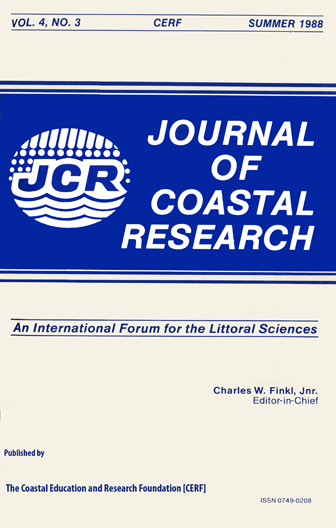Texture, Carbonate Content and Component Composition of Mauritius Beach Sands, Indian Ocean
Keywords:
Mauritius beach sands, sediment texture, carbonate content, component compositionAbstract
Samples collected from beaches bordering the southern, southeastern, western and northwestern shores representing swell (windward) and non-swell (leeward) dominated environments of the island of Mauritius were studied in order to define grain size, carbonate content and component composition. The results indicated that the sediments are coarse to medium sands (Mz = 0.28 to 1.97φ) , well to moderately well sorted ( σ1 = 0.50 to 0.72 φ) and symmetrical to negatively skewed (0.05 to - 0.30 ski) along the windward beaches, while they are coarse to fine sands ( Mz = 0.53 to 2.16 φ) , well to moderately sorted (σ( = 0.49 to 0.91 φ) and symmetrical to negatively skewed (0.12 to -0.29 ski) along the leeward beaches. Coarsest grain size was recorded at the southern part of the island where the beach is more exposed to the open ocean swell waves while the sediments were fine grained along the leeward (western) beaches and in the regions partly protected by reefs. Beach sands are composed mainly of foraminiferal tests which vary from 45 to 91.6%. The discoloured foraminiferal tests in the backshore region of Pointe aux Sables beach on the western shore and at Souillac and Baie du Cap along the southern shore reflect a relict source [Holocene age(?)], probably containing grains reworked from nearby anaerobic environments. The carbonate content of the beaches ranges from 94 to 99% indicating the biogenic nature. However, the non-biogenic fraction, besides rock fragments and feldspars is composed predominantly of olivine, followed by opaques (ilmenite and magnetite), pyroxenes and amphiboles and indicates a volcanic rock source.


